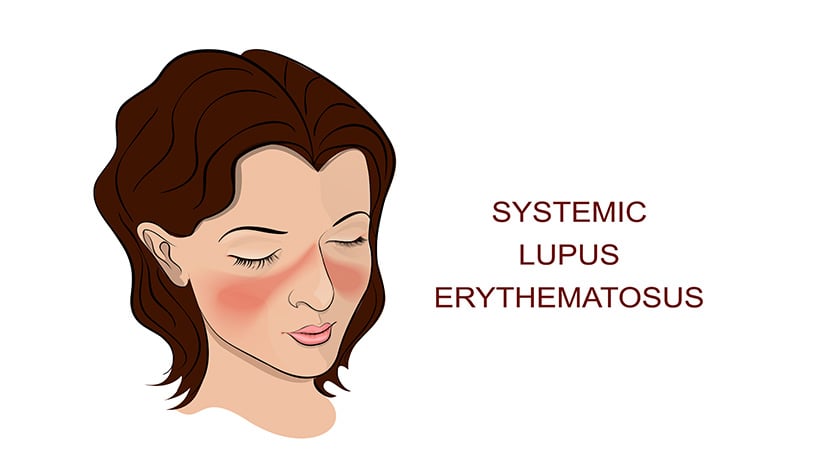Lupus is an autoimmune disease that occurs when your body’s immune system attacks your own tissues and organs. The resulting inflammation can affect many different body parts—including joints, skin, kidneys, blood cells, brain, heart and lungs. The Lupus Foundation of America estimates that 1.5 million Americans, and at least five million people worldwide, have the disease, and about nine out of ten adults with lupus are women.
People with lupus generally experience periodic flare-ups of symptoms followed by times of good condition, so early symptoms are often overlooked. But knowing the signs of the autoimmune disease can help with a speedy diagnosis. Not all cases of lupus are the same, but the following are 10 common symptoms that every woman should learn to recognize.
Skin rash or lesions
The most visible and common symptom of lupus is a butterfly-shaped rash that appears over the bridge of the nose and on both cheeks. The rash will appear suddenly, after exposure to sunlight, or just before a flare-up. Other skin conditions can include non-itchy lesions anywhere on the body, hives and/or discoloration in the fingers and toes.
Unexplained fever
One of the earliest symptoms of lupus is a slight fever (ranging between 98.5 degrees Fahrenheit and 101 degrees Fahrenheit) with no apparent cause. People with lupus may experience this seemingly minor fever recurrently.
Painful, swollen joints
Joint pain occurs in about 70 percent of patients, and it’s often one of the first signs of lupus. Inflammation can cause pain, stiffness and visible swelling in your joints, especially in the morning. Like other symptoms of lupus, joint problems can range in severity amongst patients and at different times in the disease’s progression.
Hair loss
Due to the inflammation of the skin and the scalp, many people suffering from lupus will experience thinning hair. Some people with lupus lose hair by the clump, but more often, hair thins out slowly.
Fatigue
One of the most common symptoms of the disease, about 90 percent of people with lupus report extreme levels of fatigue.
Pulmonary issues
When inflammation of the pulmonary system occurs, swelling can extend from the lungs to blood vessels and the diaphragm. Over time, breathing issues from lupus can shrink lung size. As a result, a person with lupus might experience shortness of breath or chest pain.
Kidney inflammation
Within five years of the disease’s beginnings, people with lupus may develop a kidney inflammation called nephritis. The result is that the kidneys struggle to filter out toxins and waste from the blood. Symptoms of nephritis include swelling in the lower legs and feet, high blood pressure, blood in your urine or darker urine, having to urinate more frequently at night, and pain in your side.
Gastrointestinal problems
Some people with lupus will experience heartburn, acid reflux or other gastrointestinal problems.
Thyroid problems
People with lupus might also develop autoimmune thyroid disease. The thyroid controls the body’s metabolism, so a breakdown can affect vital organs like the brain, heart, kidneys, and liver. It is estimated that about 6 percent of people with lupus have hypothyroidism (underactive thyroid) and about 1 percent have hyperthyroidism (overactive thyroid). Problems with the thyroid can result in unexplained weight gain or loss, dry skin and hair, and moodiness.
Dry mouth and eyes
When the immune system attacks the moisture-producing glands of the eyes and mouth (the lacrimal and parotid glands), the resulting dryness can be very unpleasant. As many as 10 percent of people with lupus may experience a condition called Sjogren’s syndrome, a chronic autoimmune disorder in which the glands that produce tears and saliva do not function correctly. Fortunately, there are treatments to relieve the discomfort of Sjogren’s while fighting lupus.
Sources:
https://www.healthline.com/health/lupus/early-signs
https://www.womenshealthsa.co.za/health/lupus-symptoms/
https://www.mayoclinic.org/diseases-conditions/lupus/symptoms-causes/syc-20365789
https://www.womenshealth.gov/lupus
https://resources.lupus.org/entry/facts-and-statistics
https://www.hopkinslupus.org/lupus-info/lupus-signs-symptoms-comorbidities/



